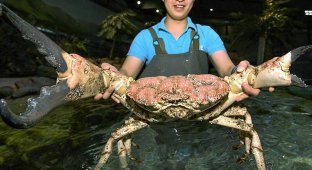Kamchatka crab: it has already destroyed the Barents Sea. Now this horde is going to devastate the Scandinavians (8 photos)
The Kamchatka crab is in a kind of superposition. On the one hand, it is a vulnerable species, the numbers of which already have to be maintained artificially. And on the other hand, there is a multi-million horde that has easily broken the ecosystem of the Barents Sea and continues to capture new territories. And, what is characteristic, in both situations, man is to blame. 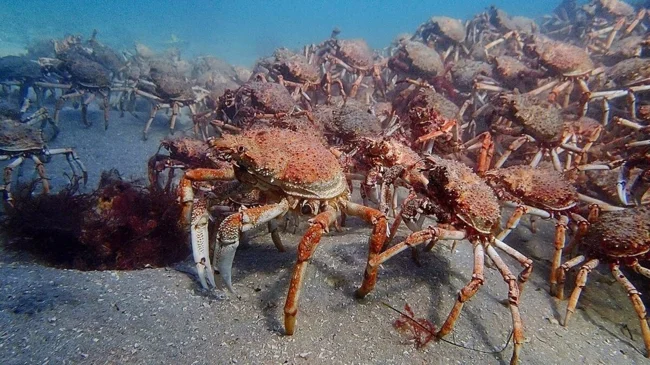
A horde of space eaters is going to storm.
When they got to Kamchatka, and the British - to East Alaska, they discovered hundreds of millions of arthropods in the local waters. Very large and tasty arthropods! The Kamchatka crab's leg span can reach 180 centimeters, and its weight is 12 kilograms. Moreover, more than 60% of this weight is tasty, healthy and easily digestible meat. Without thinking twice, both our and English settlers quickly launched industrial crab fishing, the volumes of which gradually increased over the centuries. 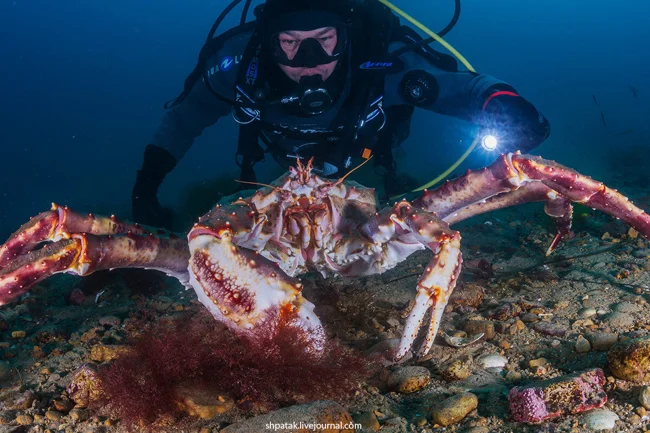
When you call your crab friend to fight for you.
However, in the 1920s, the Soviet authorities discovered that they could no longer increase production: the number of crabs began to decline. In search of a solution to the problem, they came up with an idea that no environmental organization on the planet would approve of today. They decided to relocate Kamchatka crabs to the Barents Sea. 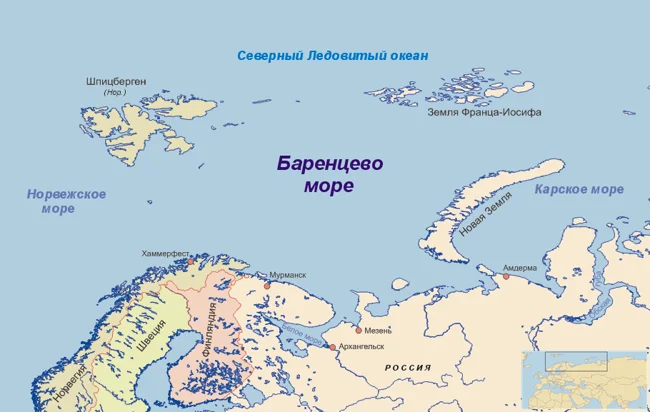
Let's remember where the Barents Sea is. Essentially, half a world away from Kamchatka. 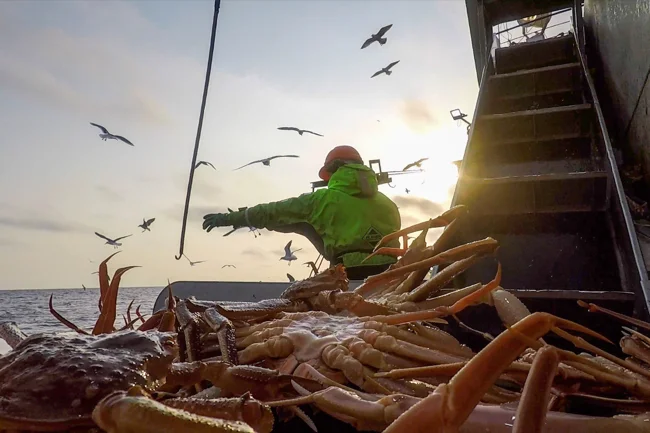
The situation with the vulnerable position of the crab has not changed to this day. For example, in 2006, crab fishing was completely banned for 7 years! Today it is allowed, but the catch quotas are strict and there are many restrictions on fishing.
By the way, the crabs themselves desperately did not want to move. Attempts to acclimatize the arthropods in the new conditions failed for more than 30 years! Only in the 60s did the crabs brought to the Barents Sea give birth for the first time. And the population of arthropods became sustainable and stable only by 1992. And then the real nightmare began. 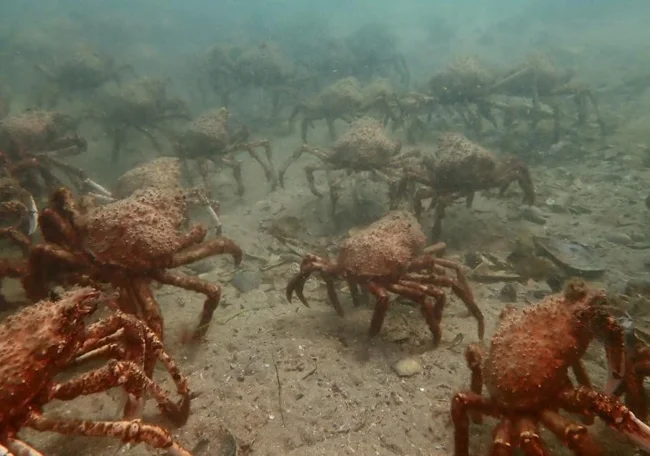
Photo taken at the bottom of the Barents Sea. 2023.
As soon as the crabs adapted to the new conditions, their reproduction rate became even higher than in their homeland. Although the females still laid 40-80 thousand eggs at a time, the larvae grew and matured noticeably faster - the warmer summer had an effect. And the shorter the time a crab spends in the planktonic larval stage, the lower the chances of it being eaten. Mortality in the early stages of development dropped sharply. It has also become lower in older arthropods: there are no specialized predators here, and predatory fish attack only young crabs with thin shells. 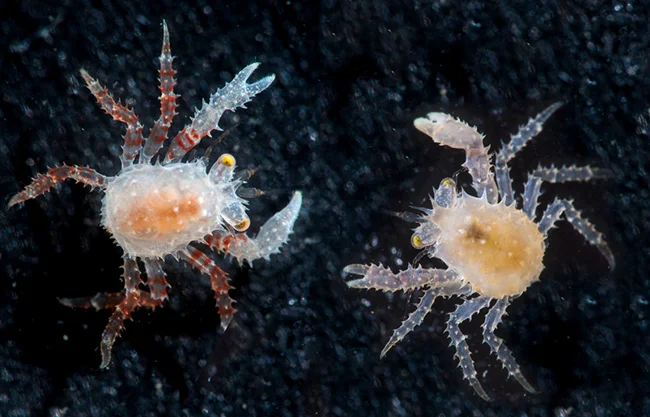
Kamchatka crab larvae look amazing... Cute?
While the crabs themselves eat everything: carrion, bottom fish, algae and other arthropods. In regions with a high population of Kamchatka crabs, small and medium-sized invertebrates disappear completely, after which they switch to larger prey, such as sea urchins and bivalves. And they also suffer great damage. In 2000, Kamchatka crabs were already consuming approximately 90 million sea urchins per year — 15% of the entire population. And their numbers were only continuing to grow. 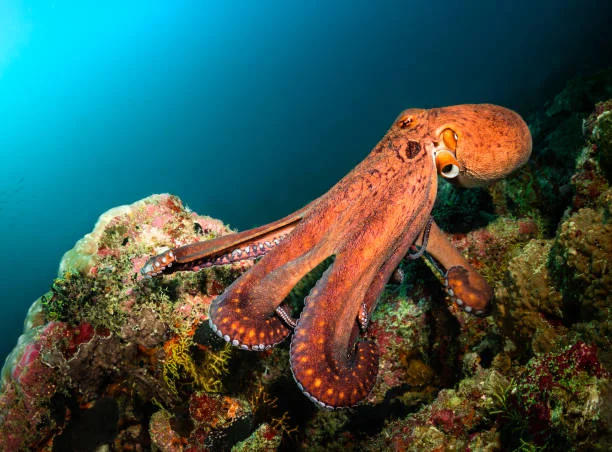
And this is a giant octopus — the Kamchatka crab's main natural enemy. Adult octopuses weigh from 15 kilograms, so they easily defeat the armored and clumsy arthropods.
Therefore, by 2003, scientists recognized that the Kamchatka crab in the Barents Sea is not only a valuable resource, but also a serious environmental problem. And the scale of this problem is only growing. Now we have a situation where the once rich and diverse bottom of the Barents Sea has turned into a wasteland. Kamchatka crabs have eaten algae, polyps, echinoderms, fish eggs. Nature has become very empty. Even seals have left these parts, because they simply have nothing to eat. 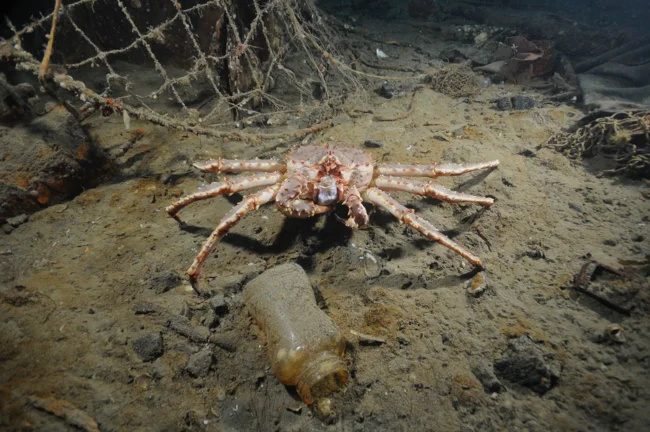
I ate everything. Bring the next sea here.
At the moment, even Scandinavian coastal waters are suffering from the dominance of crabs. One Swedish newspaper even called the hordes of crabs "Stalin's red armies." And this absurdly pompous name not only speaks of a bad sense of humor and a craving for clickbait headlines, but also that even Scandinavians are seriously alarmed by the constant expansion of crab territory.













